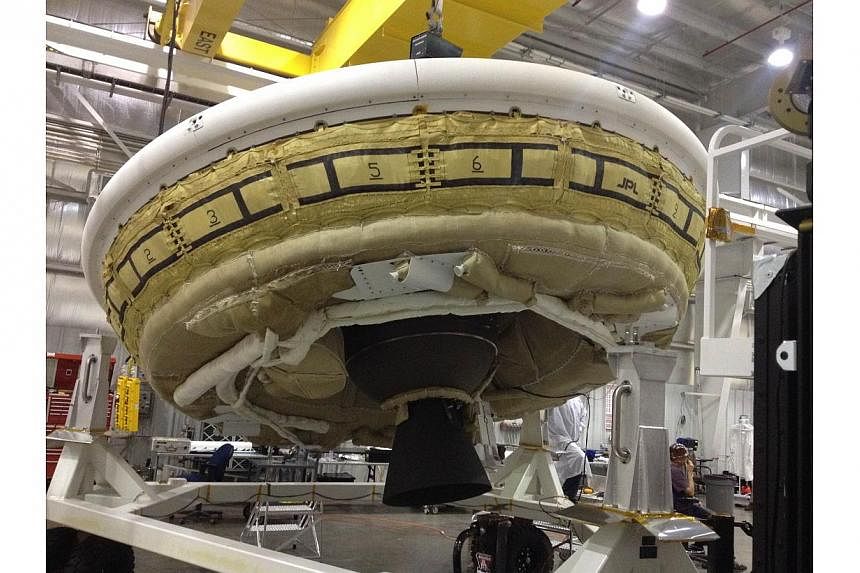WASHINGTON (AFP) - After several postponements due to bad weather, Nasa on Saturday finally sent a flying-saucer-like test vehicle high into the skies to try out technologies that could one day be used to land on Mars.
The US space agency launched its "Low-Density Supersonic Decelerator" vehicle, which includes two new devices for testing - an inflatable device for deceleration and a "mammoth parachute" for landings.
The disk-like LDSD, attached to a giant helium balloon, launched from the coast of the Hawaiian island of Kauai at 1840 GMT, and was expected to reach an altitude high enough to conduct the trials in two to three hours.
To land on Mars, Nasa has been employing a parachute system dating back to the 1970s, but with heavier spacecrafts, new equipment is needed.
The new technologies are being tested at extremely high altitudes similar to those in Mars' upper atmosphere.
Once the balloon, the largest every deployed, fully inflates while rising through the atmosphere, it will be the size of a football field.
Upon reaching an altitude of 36,600m, it will then let go of the vehicle, whose rocket will kick in and carry the system to 54,800m.
Traveling there at about 3.8 times the speed of sound, the first test will occur, with the deployment of a doughnut-shaped tube, the Supersonic Inflatable Aerodynamic Decelerator, which will slow the vehicle to 2.5 times the speed of sound.
Then the mammoth parachute will carry the vehicle back to earth for a water landing - only 40 minutes after release from the balloon.
Nasa has two more LDSD flights planned for testing the two technologies.
"If our flying saucer hits its speed and altitude targets, it will be a great day," LDSD project manager Mark Adler said.
Strong winds had forced Nasa to postpone the flight, originally slated for a two-week launch window in early June.

